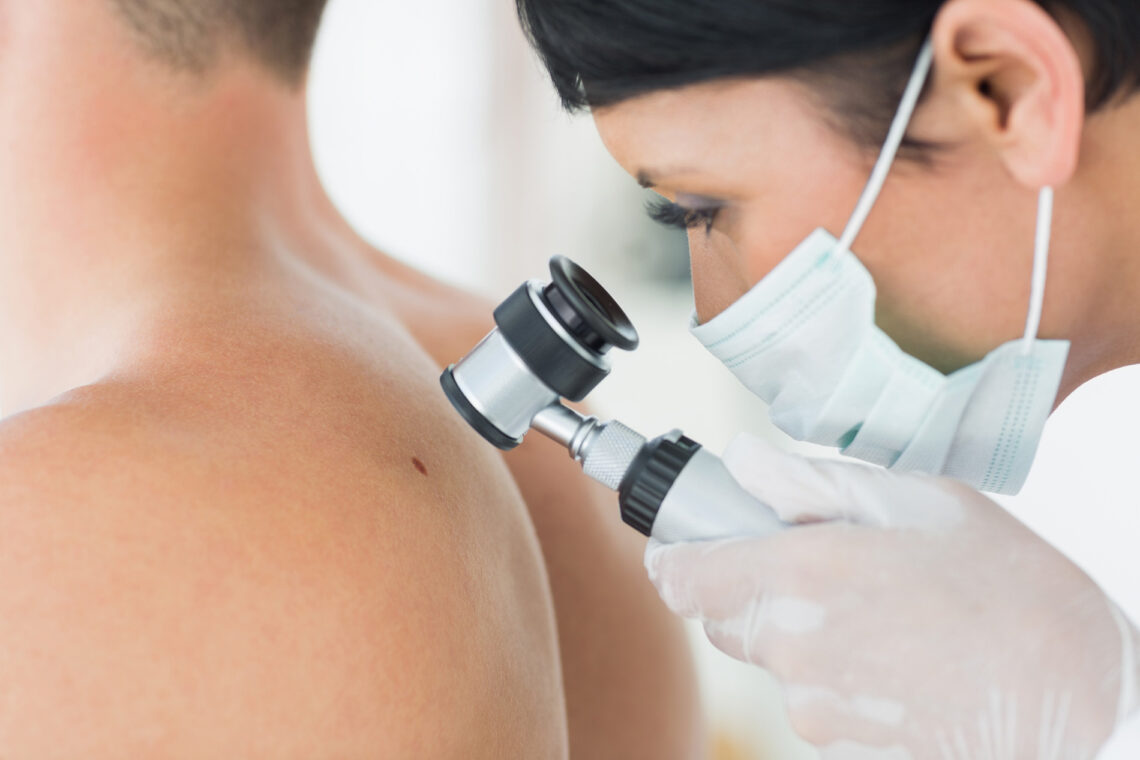Find the Best Rosacea Treatment Raleigh NC to Control Skin Flare-Ups
The Role of a Dermatologist in Diagnosing and Treating Different Skin Disorders
The role of a dermatologist extends much past standard skin treatment; it incorporates the intricate processes of detecting and dealing with a vast range of skin disorders. Via their specialized training, skin specialists use sophisticated diagnostic techniques to identify problems such as eczema, psoriasis, and acne, customizing treatment plans to fulfill specific patient demands. However, the complexity of skin problems commonly calls for a complex approach that consists of not only clinical treatments however additionally patient education and preventative methods. What effects does this comprehensive care have for person results and overall skin health and wellness?

Relevance of Dermatological Knowledge
The experience of dermatologists is critical in the diagnosis and administration of skin problems, as they possess specialized understanding that extends beyond basic medical training. This sophisticated understanding is important for accurately determining a large range of skin conditions, which commonly provide with overlapping signs and symptoms that can puzzle non-specialist professionals. Skin specialists are trained to distinguish between different skin problems, ensuring suitable treatment plans are implemented swiftly.
Moreover, the field of dermatology includes a special combination of clinical abilities and cutting-edge technology. Skin specialists make use of innovative analysis devices, such as dermatoscopes and skin biopsies, to assess skin sores and determine their nature. This technological proficiency enables very early discovery of potentially serious problems, including skin cancers cells, which can considerably boost person results.

Common Skin Disorders Identified
Various skin conditions can provide with varying levels of severity and complexity, making skin-related know-how essential for accurate medical diagnosis and management. Amongst the most common problems are acne vulgaris, dermatitis, dermatitis, and psoriasis.
Acne vulgaris, characterized by the presence of comedones, papules, and pustules, mainly affects teenagers however can persist into the adult years. Dermatitis, or atopic dermatitis, is a chronic inflammatory condition that brings about dry, itchy, and irritated skin. Psoriasis is an autoimmune problem that materializes as red, flaky plaques, mainly on extensor surfaces, and can substantially affect the quality of life.
Various other usual problems consist of rosacea, which offers with face flushing and noticeable capillary, and seborrheic dermatitis, commonly resulting in dandruff and oily spots on the scalp. Fungal infections, such as tinea pedis (athlete's foot) and tinea corporis (ringworm), are also regularly come across.
These differed problems need a detailed understanding of pathophysiology, in addition to understanding of healing alternatives, to guide effective treatment strategies - Dermatologist Raleigh NC. Via accurate diagnosis, skin doctors can give customized administration plans that attend to both the signs and underlying causes of these usual skin problems
Analysis Techniques Made Use Of
Exactly how do dermatologists accurately diagnose various skin disorders? Skin doctors employ a combination of clinical examinations, diagnostic tools, and specialized strategies to guarantee exact recognition of skin problems.
One of the main diagnostic techniques is dermoscopy, which makes use of a portable gadget to multiply skin lesions, permitting comprehensive assessment of structures not visible to the nude eye. Additionally, skin biopsies are regularly carried out, where a tiny sample of skin is gotten rid of for histopathological analysis. This technique is very useful for find here detecting conditions such as cancer malignancy and other skin cancers.
Patch testing is another important approach used to determine call dermatitis by subjecting little amounts of prospective irritants to the skin. In addition, laboratory examinations, including blood examinations and cultures, might be conducted to dismiss systemic problems or infections. Jointly, these diagnostic methods enable skin specialists to develop a detailed understanding of skin problems, resulting in precise medical diagnoses and informed person administration.

Treatment Alternatives Readily Available
A large selection of therapy choices is offered for taking care of skin conditions, tailored to the certain condition and specific patient requirements. Dermatologists employ both topical and systemic therapies, depending upon the extent and sort of skin problem. Topical therapies, such as corticosteroids, retinoids, and calcineurin preventions, are typically recommended for conditions like eczema, psoriasis, and acne. These agents target swelling and promote skin healing.
For much more severe problems, systemic treatments may be needed. These consist of dental medicines such as prescription antibiotics for bacterial infections and immunosuppressants for autoimmune disorders. Biologics, a more recent course of drugs, have actually revealed effectiveness in dealing with persistent inflammatory problems like psoriasis and atopic dermatitis.
Along with pharmacologic interventions, skin specialists may suggest procedural alternatives such as laser chemical, photo-therapy, or treatment peels (Dermatologist Raleigh NC). These procedures can resolve coloring concerns, acne scarring, and various other skin abnormalities effectively
In addition, lifestyle modifications, consisting of appropriate skincare routines and sunlight security, play an essential function in the overall management of skin problems. By incorporating these therapy modalities, skin doctors intend to enhance client outcomes and improve top quality of life for those impacted by skin problem.
Patient Education And Learning and Support
Empowerment with understanding is essential in the management of skin conditions, as patient education and assistance substantially influence therapy results. Dermatologists play a pivotal function in giving clients with comprehensive info concerning their conditions, therapy choices, and self-care strategies. Reliable communication promotes a joint environment where individuals can actively join their very own treatment.

Support prolongs past education; it incorporates emotional peace of mind and ongoing motivation. Skin specialists should create a risk-free area for clients to reveal their worries and ask questions. Resources such as informational handouts, internet sites, and support teams can further empower patients, allowing them to get in touch with others encountering comparable challenges.
Inevitably, a well-informed individual is more probable to take part in their treatment journey, resulting in far better adherence, complete satisfaction, and boosted health and wellness results. The skin doctor's function in individual education and learning and assistance is basic to maximizing the monitoring of skin conditions.
Conclusion
Finally, dermatologists play a necessary duty in the efficient medical diagnosis and treatment of a vast array of skin disorders. Their specific knowledge, integrated with innovative analysis strategies and tailored treatment plans, makes certain comprehensive treatment for clients. The emphasis on patient education cultivates proactive administration of skin wellness, encouraging people to take informed site link activities regarding their skin care routines. The payments of skin specialists dramatically enhance the quality of life for those affected by skin problem.
The role of a skin specialist prolongs far beyond fundamental skin treatment; it encompasses the intricate procedures of diagnosing and treating a vast selection of skin problems. Skin specialists use advanced analysis devices, such as dermatoscopes and skin biopsies, to assess skin lesions and identify their nature. Ultimately, the specialized training and experience of dermatologists are vital in offering extensive care for people with skin disorders.
In addition, skin biopsies are frequently performed, where a small sample of skin is gotten rid of for histopathological analysis. Jointly, these diagnostic methods allow skin specialists to develop a thorough understanding of skin problems, leading to precise diagnoses and informed person management.